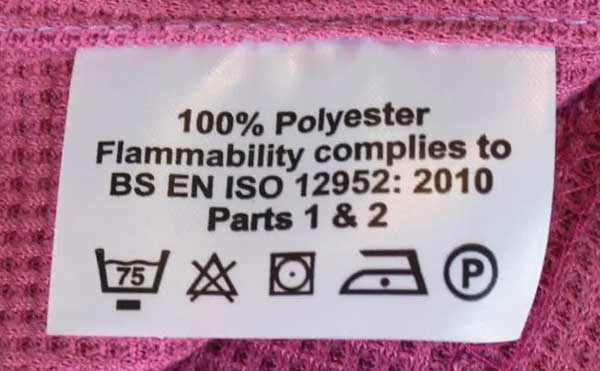So you (or a family member) have recently suffered from an unfortunate cold or flu, but that is thankfully over and recovery is on the way. One thing remains though, some cleaning still needs to be done to prevent the disease from spreading.
It is recommended to do a thorough cleanup of the bed after a cold or flu, to prevent it from spreading.
- Change and wash the bed sheets and blankets.
- Wash the pillows and soft toys.
- Disinfect and vacuum the mattress.
- Ventilate the bedroom itself.
Yes, that sounds like a lot of work, and just what exactly needs to be done? Read on to find out!
1) CHANGE & WASH THE BEDSHEETS
This is probably the easiest place to get started with the cleaning – Change the fitted sheet, top sheet, pillowcases, duvet cover, and send them for washing. Some reputable websites actually recommend using hot water and bleach to wash the “infected sheets”, then use high heat to dry them… I say these people have never done proper housework before.
Yes, high heat and bleach do kill the virus and disinfect the sheets. But it is important to read the attached care instructions on the sheets before you commit a grave mistake. Here’s an example:

For the uninitiated, here’s what those symbols mean from left to right:
- Washing Tub – Washing temperature. This is 75 Fahrenheit or about 25 Celsius, room temperature. One bar below means slow spin speed.
- Triangle – A cross over the triangle means “cannot be bleached”.
- Square Circle – One dot inside means low heat. Two means high heat, and zero means no heat (tumble dry only).
- Iron – Same story, one dot means low heat.
- Circle With P – Dry wash instruction.
I shall leave a link below to a full reference list, but this should demonstrate the point well enough. Not all materials can take high heat and be washed in boiling hot water. You will end up destroying the sheets instead… So for these kinds of materials, just use a gentle disinfecting detergent.
2) WASH THE PILLOWS, SOFT TOYS, BLANKET
No need to be confused. Most pillows, soft toys, and plushies can be machine washed. These are also the ones that probably get neglected and have the most amount of “nasties” hidden inside. Here’s a quick step-by-step instruction:
- For pillows, remove the pillowcase first.
- For plushies, put them into a mesh laundry bag to prevent damage.
- Put the pillow or plush toy into the washing machine – Don’t overload, just wash 1-2 pieces at a time.
- Use cold water and gentle slow spin.
- Don’t add bleach and no softener too. Just some gentle anti-bacterial detergent.
- Same with the drying cycle, use slow spin and low heat. Run them through another cycle of drying if one is not enough.
3) DISINFECT THE MATTRESS
The pillows and sheets are not the only ones that need attention, it is best to do some cleaning on the mattress itself too. Depending on how hardworking you are, here are a couple of things that can be done to clean the mattress up:
- Spot cleaning. Rub the dirty spots with some light soap, then clean them off with a moist cloth.
- Put baking soda on top of the spots to soak up the moisture for 20-30 minutes.
- Then vacuum the mattress entirely, pull out all the dust and dirt.
- If you want, spray some fabric disinfectant on the mattress. There are plenty of choices from the major brands – Tide, Clorox, Dettol, Febreze.
- If you don’t like chemicals, a steam cleaner is also a good alternative.
4) WIPE THE BED FRAME
For the germaphobes, remember to wipe the bed frame too. Just use a gentle disinfecting wet wipe or general-purpose cleaner. There’s probably some dust sitting below the mattress too, so flip up the mattress and vacuum if you really must…
6) VENTILATE THE BEDROOM
Open the doors and windows, ventilate the bedroom if you can. Stale and recirculated air is a major culprit for the spreading of air-borne diseases, it also causes people to recover slower too. So get some sun and fresh air into the room. If that cannot be done, then at least use a room disinfectant spray. Clean up the air conditioner or air circulator, put in a new and better HEPA filter.
7) DISINFECT OTHER SURFACES
Lastly, the bed is not the only place to clean. The surrounding area probably has a ton of virus sitting around, and also need a quick wipe down.
- Bedside tables.
- Door handles.
- Curtains.
- Mop the floors.
- Vacuum the rugs.
PROTECT YOURSELF, WEAR A MASK.
All the washing, cleaning, and vacuuming will probably kick up a whole load of dust. If you have just recovered, it is a really bad idea to inhale more dust. Remember to wear a mask while cleaning, don’t trigger the sickness once again.
THE END – MORE REST NOT WORK.
Thank you for reading, and we have come to the end of this short guide. While cleaning is recommended, resting and fully recovering are even more important. So don’t worry too much if you can’t clean the entire bed and room in a single day.
Just take your time and slowly plan what to clean one at a time, over a couple of days. Don’t overwork yourself and fall sick once again. Take care and have better nights of sleep!
LINKS & REFERENCES
- How to Clean After Illness – WebMD
- How to Properly Clean After a Household Illness – The Spruce
- Laundry Symbols Explained: Complete Care Label Guide – I Hate Ironing
